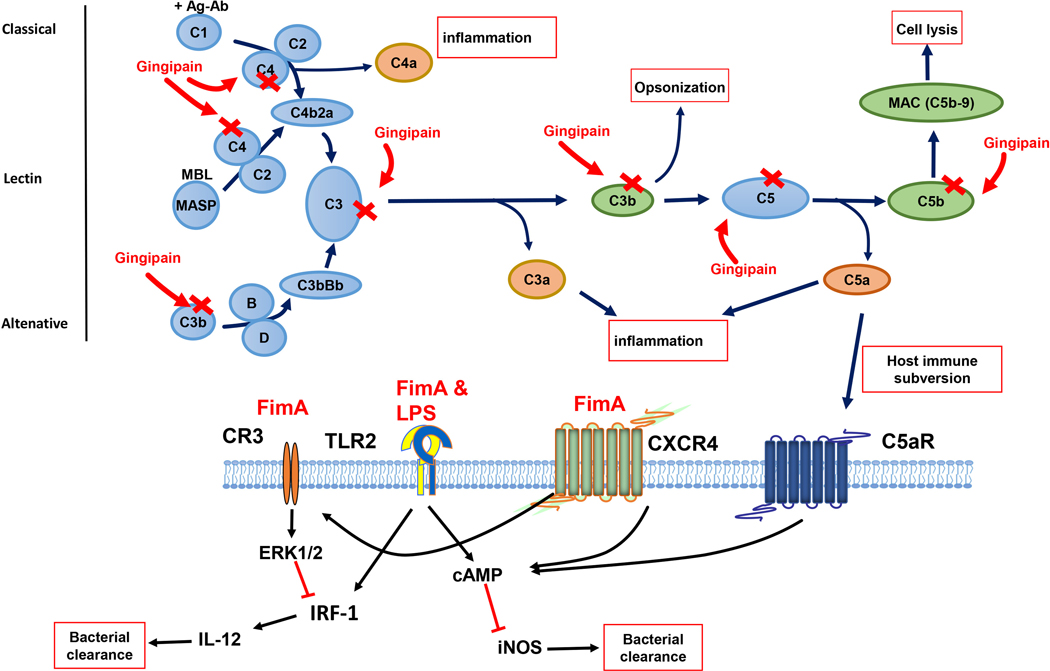Fig. 1.
P. gingivalis virulence factors subvert immune responses to evade bacterial clearance and promote inflammation. P. gingivalis gingipains degrade C3, C4, and C5 to block complement cascade. Besides, anaphylatoxins C3a, C4a, and C5a are generated to promote inflammation. Degradation of C3b prevents opsonization and phagocytosis, and C5b cleavage prevents the formation of membrane attack complex (MAC). Furthermore, C5a crosstalks with TLR2/1 activation and enhances the cAMP responses, which inhibits iNOS production and bacterial killing. Fimbriae promote the crosstalk between CXCR4 and TLR and further enhance cAMP responses. Fimbriae also induce CXCR4-dependent activation of CR3. The interaction between CR3 and P. gingivalis requires fimbriae and induces ERK1/2 signaling to down-regulate IL-12 production, which results in impaired bacterial clearance.

